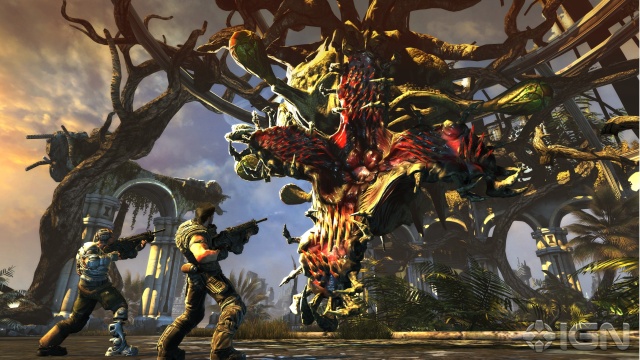A long time ago in a galaxy far, far away, a social network newsfeed became an epic saga....
Darth Vader invited Stormtrooper to the event “Capture Rebel Alliance Cruiser”
Stormtrooper wrote on the wall for the event “Capture Rebel Alliance Cruiser”: “The Death Star plans are not in the main computer”
^Darth Vader commented on Stormtrooper’s post: “Tear this ship apart until you find the passengers, I want them alive!”
R2-D2 wrote on C-3PO’s wall: “beep beep wooooot”
^C-3PO commented on R2-D2’s wall post: “Secret mission? What plans? What are you talking about?”
R2-D2 is on Tatooine with C-3PO
Darth Vader wrote on Princess Leia’s wall: “Don’t act so surprised, Your Highness. Several transmissions were beamed to this ship by Rebel spies. I want to know what happened to the plans they sent you.”
^Princess Leia commented on his post: “I don’t know what you’re talking about. I’m a member of the Imperial Senate on a diplomatic mission to Alderan.”
^Darth Vader commented on his post: “You are part of the Rebel Alliance and a traitor. Take her away!”
Darth Vader she must’ve hidden the plans in the escape pod. There will be no one to stop us this time!
C-3PO I’ve got to rest before I fall apart, my joints are almost frozen!
Jawa posted C-3PO and R2-D2 in the Marketplace!
Luke Skywalker just got two new droids for the farm… Biggs is right, I’m never gonna get out of here!
C-3PO wrote on Luke Skywalker’s wall: “I’m C-3PO, human-cyborg relations”
Luke Skywalker is now friends with C-3PO and R2-D2
R2-D2 posted a picture. “help me Obi-Wan Kenobi, you’re my only hope”
^Luke Skywalker commented: “What’s this?”
^C-3PO commented: “Oh, he says it’s nothing sir.”
^Luke Skywalker commented: “She’s beautiful”
^Luke Skywalker commented: “I wonder if he means Old Ben Kenobi?”
Luke Skywalker wrote on Ben Kenobi’s wall: “Do you know an Obi-Wan Kenobi?”
^Ben Kenobi commented: “Of course I know him! He’s me!”
Ben Kenobi changed his name to Obi-Wan Kenobi
Obi-Wan Kenobi sent Luke Skywalker a gift: lightsaber
Obi-Wan Kenobi is at Mos Eisley Spaceport with Luke Skywalker, C-3PO, and R2-D2
Stormtrooper wrote on Obi-Wan Kenobi’s wall: “We need to see your identification”
^Obi-Wan Kenobi commented: “You don’t need to see our identification”
^Stormtrooper commented: “We don’t need to see your identification”
^Obi-Wan Kenobi commented: “These aren’t the droids you’re looking for”
^Stormtrooper commented: “These aren’t the droids we’re looking for”
^Luke Skywalker likes this.
Luke Skywalker is now friends with Han Solo and Chewbacca
Obi-Wan Kenobi I feel a great disturbance in the Force, as if a million voices cried out in terror, and were suddenly silenced.
Han Solo we’re caught in a tractor beam it’s pulling us in!
Han Solo is at The Death Star with Luke Skywalker and 4 others.
Darth Vader I sense something. A presence I’ve not felt in a long time…
Han Solo this sucks. Even if I could take off, I’d never get past the tractor beam
^Obi-Wan Kenobi commented: “leave that to me”
Obi-Wan Kenobi wrote on Luke Skywalker’s wall: “May the Force be with you. Always.”
R2-D2 beep beep woot beep wooooooot!!
^Luke Skywalker commented: “What’d he say?”
^C-3PO commented: “The Princess is here! Detention block AA23.”
^Han Solo commented: “Forget it, I’ve gotten more than I bargained for already”
^Luke Skywalker commented: “She’s rich”
^Han Solo likes this
Han Solo wrote on Luke Skywalker’s wall: “Luke, we’re gonna have company!”
Luke Skywalker is now friends with Princess Leia
Princess Leia wrote on Luke Skywalker’s wall: “Aren’t you a little short to be a Stormtrooper?”
^Luke Skywalker commented: “I’m Luke Skywalker I’m here to rescue you! I’m with Ben Kenobi!”
Luke Skywalker wrote on C-3PO’s wall: “turn off all the garbage smashers on the detention level!”
Obi-Wan Kenobi just shut down the tractor beam. Come get me Darth
Princess Leia wrote on Han Solo’s wall: “Listen I don’t know who you are, but from now on do as I tell you.”
^Han Solo commented: “Listen, your worshipfulness, I take orders from only one person, me!”
^Princess Leia commented: “It’s a wonder you’re still alive”
^Han Solo commented: “No reward is worth this”
^Chewbacca likes this
Darth Vader wrote on Obi-Wan Kenobi’s wall: “I knew I felt your presence. Now the circuit is complete, now I am the mast.”
^Obi-Wan Kenobi commented: “if you strike me down I shall become more powerful than you
could ever imagine”
Princess Leia is on Yavin IV with Luke Skywalker, Han Solo, and 3 others
Princess Leia that was too easy…they must be tracking us…
^Darth Vader likes this
Darth Vader this will be a day long remembered. It has seen the end of Kenobi, and it will soon see the end of the Rebellion
Luke Skywalker Red 5 standing by
Luke Skywalker entering the trench. this’ll be just like Beggar’s Canyon back home
Obi-Wan Kenobi wrote on Luke Skywalker’s wall: “use the Force, Luke. Trust me”
Darth Vader the Force is strong with this one
Luke Skywalker turned off his targeting computer
Darth Vader wrote on Luke Skywalker’s wall: “I have you now”
^Han Solo commented: “not so fast! YEEEHOOOOOO!!!”
^Luke Skywalker likes this
Han Solo wrote on Luke Skywalker’s wall: “You’re all clear kid let’s blow this thing and go home!”
^Princess Leia likes this
Princess Leia invited Luke Skywalker, Han Solo, and Chewbacca to the event “Awards Ceremony”






















